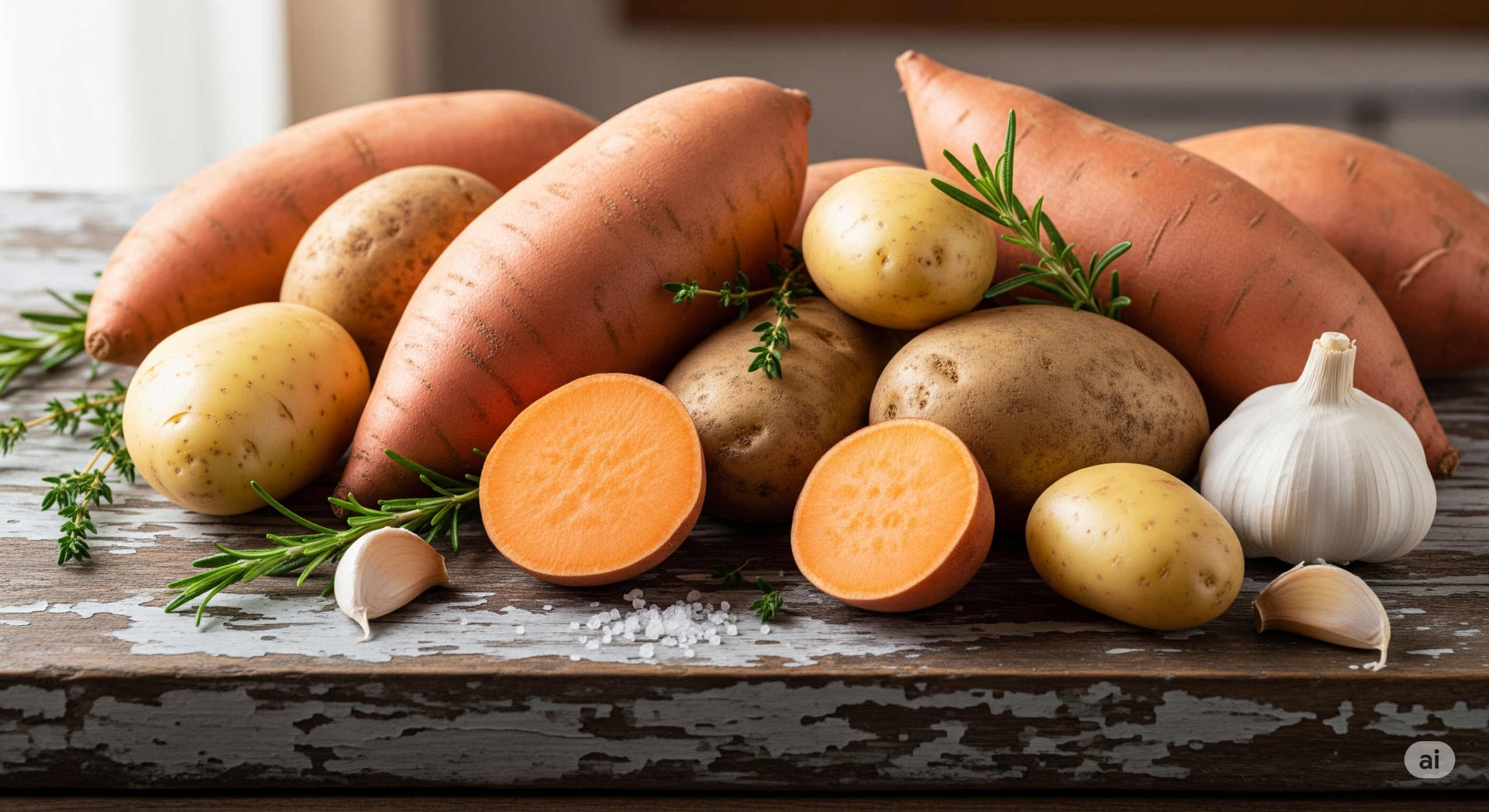1. Staple Root Crops: Sweet Potatoes and Potatoes
Sweet potatoes and potatoes are both representative starchy root vegetables. They share the commonality of being mainly composed of carbohydrates, but there are important differences in their nutritional content and their effect on blood sugar.
2. Difference in Glycemic Response
– Glycemic Index (GI): While it varies with the cooking method, the GI of a ‘boiled sweet potato’ is generally in the lower range of 40-50. In contrast, the GI of a ‘boiled potato’ is in the higher range of 70-80. This means that sweet potatoes raise post-meal blood sugar more slowly and gradually than potatoes. (However, a baked sweet potato can have a GI approaching 90, raising blood sugar even faster than a potato.)
– Dietary Fiber Content: Sweet potatoes contain more dietary fiber than potatoes. This abundant fiber helps to slow down the absorption of glucose, preventing sharp spikes in blood sugar.
3. Difference in Nutritional Content
– Vitamin A: Sweet potatoes, especially the orange-fleshed varieties, are very rich in beta-carotene (which the body converts to Vitamin A). Vitamin A is important for eye health and immune function.
– Vitamin C and Potassium: Potatoes are a good source of Vitamin C and potassium.
4. Conclusion
While both have excellent nutrients, from a pure ‘blood sugar management’ perspective, sweet potatoes can be a slightly more favorable choice than potatoes as they raise blood sugar more gradually when the same amount is consumed. Of course, whichever you choose, it’s most important to ‘steam or boil’ them instead of frying, and to control the total carbohydrate amount, for example, by reducing your portion of rice.
Summary: Although sweet potatoes taste sweet, they have a lower glycemic index and more fiber than potatoes, causing a more gradual rise in blood sugar. Therefore, if cooked properly, they can be a better choice for blood sugar management than potatoes.


Leave a Reply